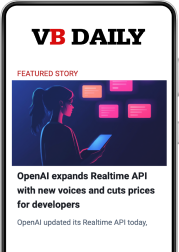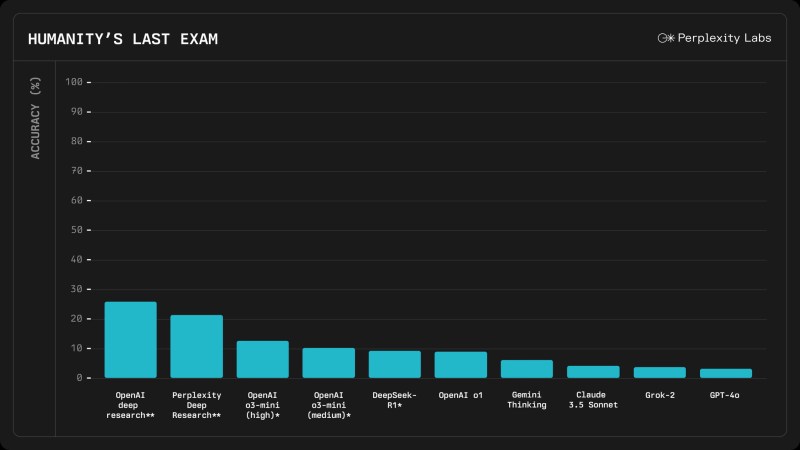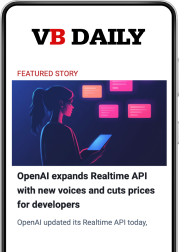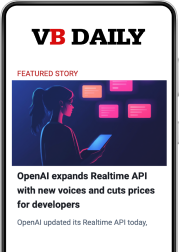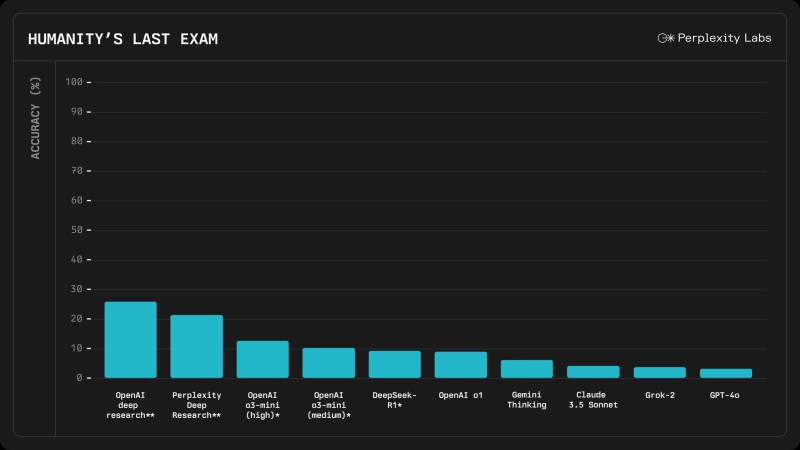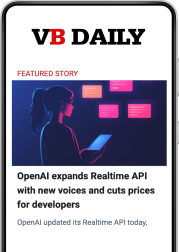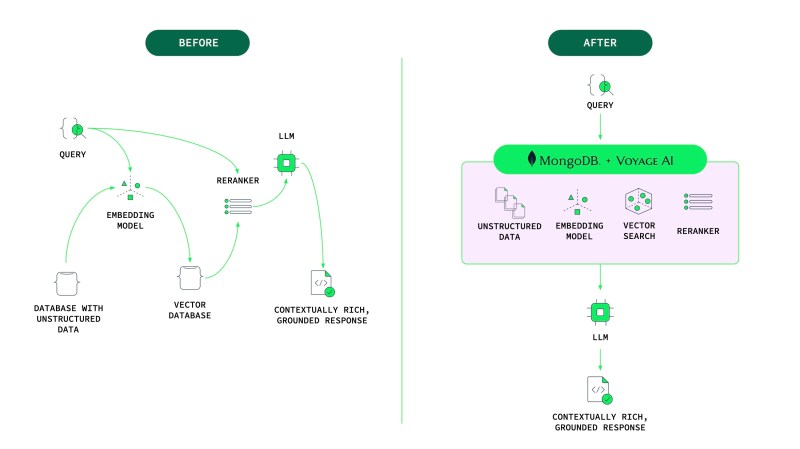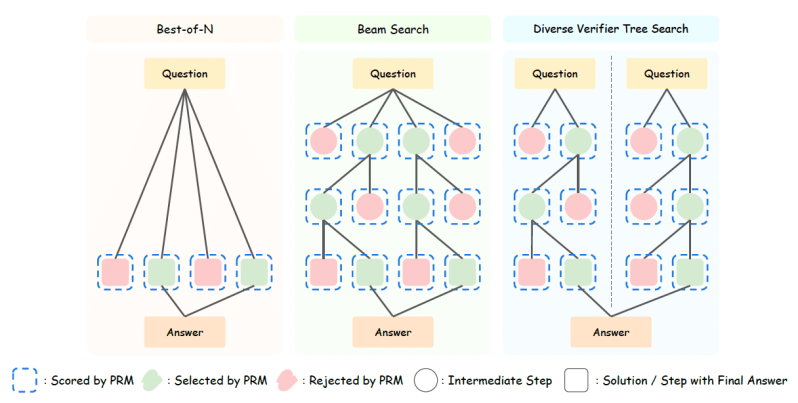You.com unveils AI research agent that processes 400+ sources at once
Join our daily and weekly newsletters for the latest updates and exclusive content on industry-leading AI coverage. Learn More You.com launched a new artificial intelligence research tool today that promises to transform how businesses conduct market research by analyzing hundreds of sources simultaneously and producing comprehensive reports in minutes instead of weeks. The tool, called Advanced Research & Insights agent (ARI), targets the $250-billion management consulting industry by automating the labor-intensive research process that typically requires teams of analysts to pore over documents for days or weeks. “The entire world of knowledge work is changing, and that’s a trillion-dollar-plus industry,” said Richard Socher, cofounder and CEO of You.com, in an interview with VentureBeat. “When every employee has instant access to comprehensive, validated insights that previously required teams of consultants and weeks of work, it changes the speed and quality of business decision-making.” 10x more sources: How ARI’s technical breakthrough powers enterprise research What sets ARI apart from existing AI research tools is its ability to process and analyze more than 400 sources simultaneously — roughly 10 times the number that competing systems can handle, according to the company. This capability comes from a novel approach to managing context and compressing information. “The way that we’re able to find that many sources is [that] we’re taking this iterative research approach,” Bryan McCann, cofounder and CTO of You.com, told VentureBeat. “We bring back an initial set of sources, summarize and create a first research report, and then gather even more. At each step, we’re compressing that information down so we’re only adding new things.” ARI doesn’t just compile text-based reports. The system automatically generates interactive visualizations based on the data it discovers — a feature You.com claims is unique among current AI research tools. During a demonstration, Socher showed examples of automatically generated reports on renewable energy that included interactive plots showing a variety of information. “It puts together this beautiful PDF,” Socher said. “Since it talks about energy, it includes useful plots looking at market size, market growth expectations, mix of renewables and fossil fuels, solar energy growth rates.” ‘Click to Verify’: How ARI solves AI’s accuracy problem for business users Crucially for enterprise customers, ARI provides direct source verification for every claim. Users can click on any citation and the system will highlight exactly where the information came from, making fact-checking substantially faster. “When you click on the citation, it actually scrolls down and highlights exactly where it found that fact,” Socher demonstrated. “If your career and your job depends on the facts being right, that’s very helpful.” You.com is positioning ARI primarily for enterprise customers in research-intensive industries. Early adopters include Germany’s largest medical publisher, Wort & Bild Verlag, and global consulting firm APCO Worldwide. “We already have several hundreds of active accounts from each major consulting company,” Socher noted. “We’re excited to partner with them and help them be more productive.” Dr. Dennis Ballwieser, managing director at Wort & Bild Verlag, reported that research time “has dropped from a few days to just a few hours” through using ARI, and praised the accuracy of its results across both German and English content. ARI enters an increasingly crowded marketplace for AI research tools. Recent weeks have seen announcements of DeepSeek, Claude 3.7 from Anthropic and various other research-oriented models. Socher claims ARI differentiates itself through comprehensiveness, verification capabilities and speed. “Compared to research tools from OpenAI, for instance, ARI has 10 times the sources, but at the same time, it’s three times faster,” he said. Unlike some competing systems, ARI doesn’t make decisions about which information is most trustworthy but instead presents comprehensive findings. “ARI is optimized for comprehensiveness, so if it comes across contradicting statements, it’s much more likely to just tell you this source said this, and these sources said that,” McCann explained. “It’s not really inclined to make the decision for you as to which information is the most trustworthy.” Beyond public data: how ARI integrates enterprises’ internal knowledge A key aspect of ARI’s enterprise strategy is its ability to incorporate internal company data alongside public sources — creating a bridge between an organization’s proprietary information and the broader research landscape. “The biggest thing that we’re already doing now with enterprise customers is to give ARI access to their company internal data,” Socher said. “So you get all these amazing dashboards and insights right away about your own organization.” You.com is taking an unusual approach to pricing ARI, charging per report rather than based on computational resources consumed — a strategy that aligns costs with business value rather than technical implementation. “We’re looking at pricing not by token anymore, but more on a usage basis, at the actual response level,” McCann explained. “Thinking of it more like: The final piece of collateral that comes out is the thing that you’re paying for — orders of magnitude cheaper than it would have cost in the past.” This approach reflects You.com’s belief that AI usage will follow Jevons paradox: as efficiency increases, total consumption rises rather than falls. “Of course, the training will get cheaper,” said Socher. “But at the same time, when everyone realizes [that] the more compute you give a model, the better the results get, it doesn’t even make sense to think of one model as how intelligent it is.” From research to action: ARI’s future as an autonomous business agent You.com sees ARI as just the first step in transforming how organizations approach knowledge work. The company plans to make ARI more agentic — capable of taking independent actions based on research findings. “For as long as we’ve been building it, we’ve wanted to make it more agentic,” McCann said. “If you can access almost all of the information out there about a thing, that should provide a better foundation for any decision-making on top of that information.” Socher frames You.com’s evolution around what he calls “the four A’s: accurate answers, agents and AGI.” He envisions a future when everyone becomes a manager
You.com unveils AI research agent that processes 400+ sources at once Read More »


